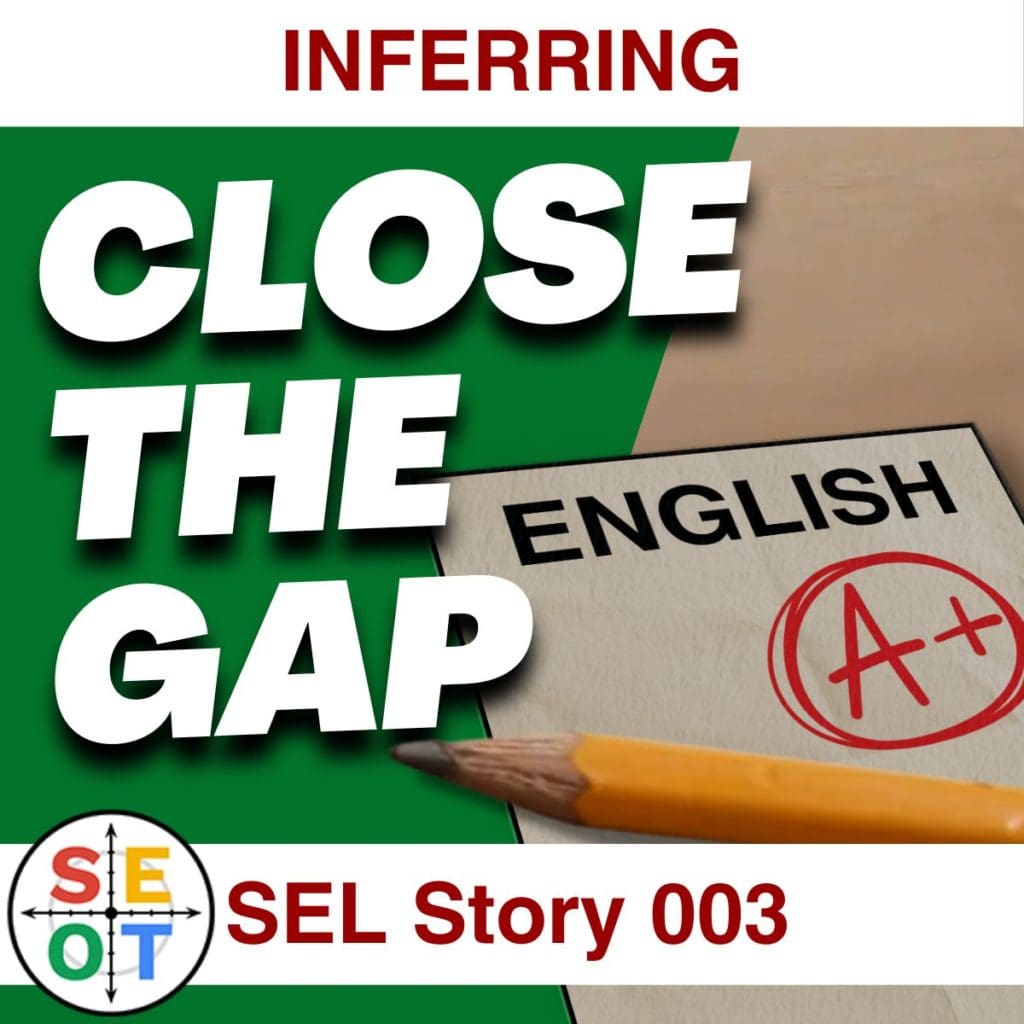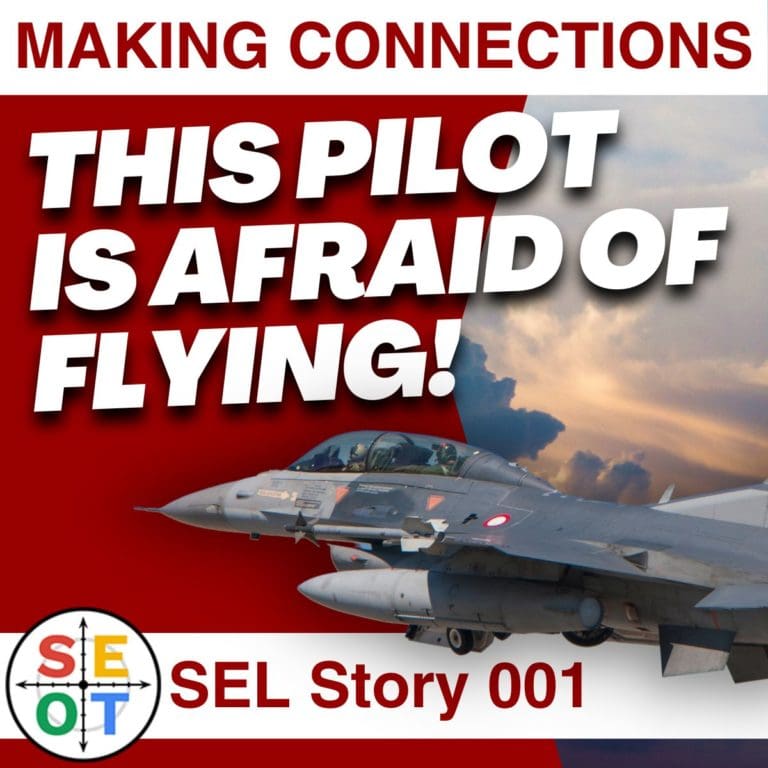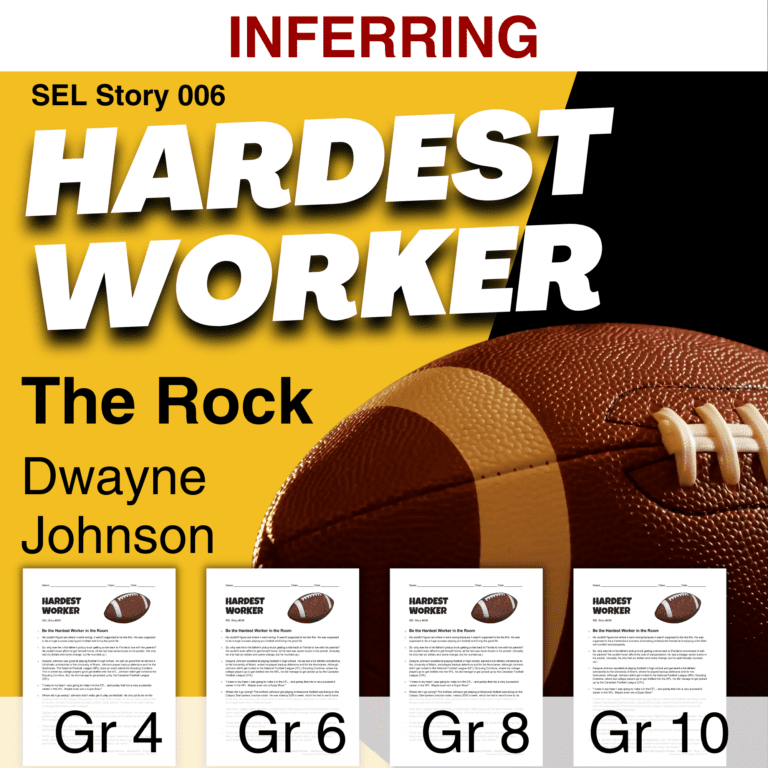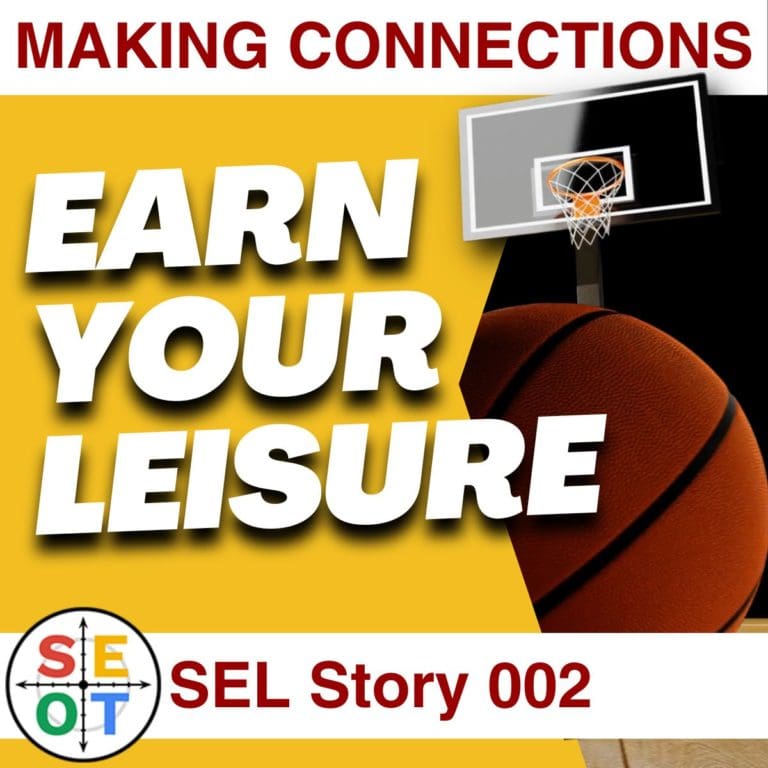This innovative app used by 500 million people helps close the gap between rich and poor.
Can your students guess which app this is?
This reading comprehension article goes well with the Inferring reading strategy.
Read the Non-Fiction Article:
This App Can Help Close The Gap
There is a social gap between the rich and the poor. There is also an economic gap based on how much money you have. Most people think education will help close this gap. This is ironic because the opposite is happening. The lack of access to education is making the situation worse for some people. Not being able to get a good education can be a big problem.
Luis von Ahn is a co-founder of the popular language app Duolingo. He grew up seeing education as something that brings about inequality. Von Ahn was born and raised in Guatemala. Guatemala is a country in Latin America. It has a developing economy. There are 17 million people in the country. It’s estimated that 9.5% of these people live in extreme poverty. Extreme poverty is when you make less than $2.15 per day. Von Ahn attended a private English school. Going to a private school costs money. So, the school gave free education to help disadvantaged kids in Guatemala City. Von Ahn saw how a scholarship to his school could completely change these kids’ lives.
The change that made in their lives was insane. These people would go from literally having a house with no floors, just dirt, and they didn’t have dinner most nights because they couldn’t afford to eat, to being able to go to college, get good jobs, pull their whole families out of poverty.
There’s a wide gap between the haves and have-nots. There is a gap between rich and poor people who live in the same country. There is also a gap between countries that have more or less money. That’s why von Ahn said the following at DuoCon 2022. “What happens in practice is that people who have a lot of money can buy themselves the best education in the world, whereas people who don’t have very much money barely learn how to read and write.” Education can level the playing field. But this can only happen if everyone has an equal opportunity to get a good education.
In 2011, von Ahn and Severin Hacker started Duolingo, a free way to learn languages. One of Von Ahn’s goals is to help close the education gap. Duolingo is interesting. There are both rich people and poor people who use the app. Bill Gates uses the app. Syrian refugees also use the app.
Duolingo has grown to over 500 million users worldwide. Before 2017, the app was making zero dollars. That’s because there were no ads. There also wasn’t anything to buy in the app. But, by 2022, Duolingo made roughly $113 million in February alone. This money came from people buying things in the app (in-app purchases.) Duolingo is a freemium app. You can use the basic app for free, but you must pay for the premium features. The free version of Duolingo gives you a small number of gems as you complete lessons. But there’s a catch. You are only allowed five mistakes per day before you need to buy hearts using the in-game currency.
People upgrade to a premium subscription because they want to get rid of ads. It’s also less stressful because you get unlimited hearts. Power users continue to buy in-game currency with real money. These players want timer boosts to increase their chance of earning XP. High scores help you maintain your league ranking. Duolingo has made learning a language fun by turning learning into a game.
Why even charge for the app if the goal is to offer free education? Why not get rid of the ads completely? Because Duolingo received millions of dollars from investors to start the business. Von Ahn used the seed money to pay for salaries and make the product when the company started. Eventually, investors want a return on their investment. They want their money returned with interest. So, Duolingo had to become a business that made money to cover costs and then some to be profitable.
According to CNBC, 94% of users use the app’s free features. This means only six percent of users pay for the app. But that’s enough money to pay the costs to operate and run the app. It can also cover employee salaries and investor profit for the company. This business model must work because people keep loaning money to the company to help it grow. In 2020, people continued to invest $35 million in Duolingo through its Series H funding. This money would allow Duolingo to continue to develop the product. They could also expand the team and hire more people. People estimate the company is worth $2.4 billion. Since its launch, investors have put in $183 million to grow the company.
Von Ahn and Duolingo pay close attention to what people want. For example, early on, the company noticed a problem their users kept telling them about. The CEO shared this story on YouTube. The video is called “Lowering Barriers to Education with Luis von Ahn.”
A few years ago, we started getting the same email from many of our users. They were all saying something like thank you so much for teaching me English for free but now I have a problem. I need a certificate that says that I know English.
Von Ahn talks about how they looked into the issue. It turns out that 1.2 billion people are learning a foreign language. Of these people, 800 million live in poor social and economic conditions. They’re learning English to get a better job or go to school.
English can improve your life. Do you come from a non-English speaking country? American colleges and universities will want proof that you understand English. You must also prove you speak English to get a work visa in the UK.
How do you prove to an employer, university, or government that you know English? We live in a global economy where people move between countries. Several organizations have come up with an English test that is given and scored in the same (standard) way. They will give you a certificate that shows how fluent you are in English. For example, there’s TOEFL (Test of English as a Foreign Language.) Their website says that more than 11,500 universities accept the TOEFL test.
When von Ahn was younger, he had to take the TOEFL to apply to a university in the States. First, you book an appointment. Then, you wait a few weeks to get a seat at a test center. You pay $200 to take the test when it’s your turn. Finally, you have to wait several more weeks to get your results. Unfortunately, not every city has a testing center. When von Ahn applied, taking the test in Guatemala was impossible. His country had run out of spots.
Von Ahn shares his story in the YouTube video. “I had to actually fly to the neighboring country of El Salvador to take the standardized test. So in my case I was able to do it but then you know I remember thinking what would have happened if my family couldn’t afford $1,000 just to prove that I knew English?”
Duolingo’s users wanted a way to prove they knew English. Von Ahn wanted to make education more accessible. So, Duolingo created its own standardized English test. Their test uses machine learning. Artificial intelligence makes sure the test is given and marked the same way every time.
The Duolingo English Test currently costs $50. You can do it anywhere by logging into a website. The results are ready within 48 hours. All you need is your passport, a quiet, well-lit room, and an hour of free time. You also need a reliable internet connection and a computer. The computer must have a front-facing camera, microphone, and speakers. Their website states the Duolingo English Test is accepted as proof of English at over 3,500 places. Some famous schools are on this list, including Yale, Duke, and John Hopkins University. Duolingo can also send the accreditation directly to the organizations.
The market is always changing. Von Ahn and Duolingo need to continue to pay attention to find opportunities. Duolingo continues to innovate. Right now, they offer freemium language lessons and more-affordable language certification. Who knows what they will do in the future! This edtech giant is helping to close the gap between the rich and the poor. They are leveling the playing field.
Closing the Gap from an SEOT perspective
Let’s break apart this article to analyze it. What can we learn about how to optimize what we do? There is always a gap between where we currently are and where we want to be. How can we close this gap?
Optimization is a process with two parts. First, you analyze what is working (or not working.) Then, you do more of what is working (or less of what’s not working.) We do this to improve results.
OPTIMIZATION Idea: Pay attention to patterns
Patterns can tell us what is working and what is not working. We can look for trends in data. Are the numbers going up or down? We can also look for clues in what people tell us. Are there stories and messages that we hear over and over again?
Von Ahn noticed people were asking his company the same question. Duolingo users wanted a way to prove that they knew English. It would have been easy for Duolingo’s customer support team to ignore the questions. They could have simply said, sorry, our app only teaches the language. We can’t prove you speak English.
Instead, Duolingo looked deeper to figure out the real problem. Lots of people apply to universities, governments, and businesses. These places needed to know how well these people spoke English. After all, anyone can fake a screenshot. High XP in Duolingo doesn’t always mean you are learning a lot. Besides, many people can share an account. Because of this, it’s hard to show a user account to prove what you can do.
One answer is to have people do the same test and compare scores. This is called a standardized test. In this kind of test, you can trust the results to be reliable because you can verify a person’s score. The test is marked the same way to give consistent results. This way, two people with similar scores probably have the same level of English. People looking at test scores need to trust that the score shows how well you know English. Von Ahn realized the current system requiring in-person testing centers didn’t work well. The existing tests were costly. They also took a long time. Plus, the test system hadn’t changed very much. What if someone could come up with a brand new way to do this? An innovative idea could disrupt the marketplace. A better product could shake things up!
Duolingo paid attention to the pattern of what people were saying, and it paid off. The company discovered a new business opportunity. They found another way to make money. People want a document that shows how fluent they are. The Duolingo English Test is cheaper, quicker, and easier than the current options.
Now, Duolingo will need to continue to pay attention to what people are telling them. This way, they can improve how valid their English test is. Paying attention to feedback will also help Duolingo improve its English test. They need to show how it is a legitimate way to measure how well someone speaks English. If they are successful, Duolingo will help more people in the developing world access a better life. At the same time, they will turn a tidy profit for the company and its investors.






